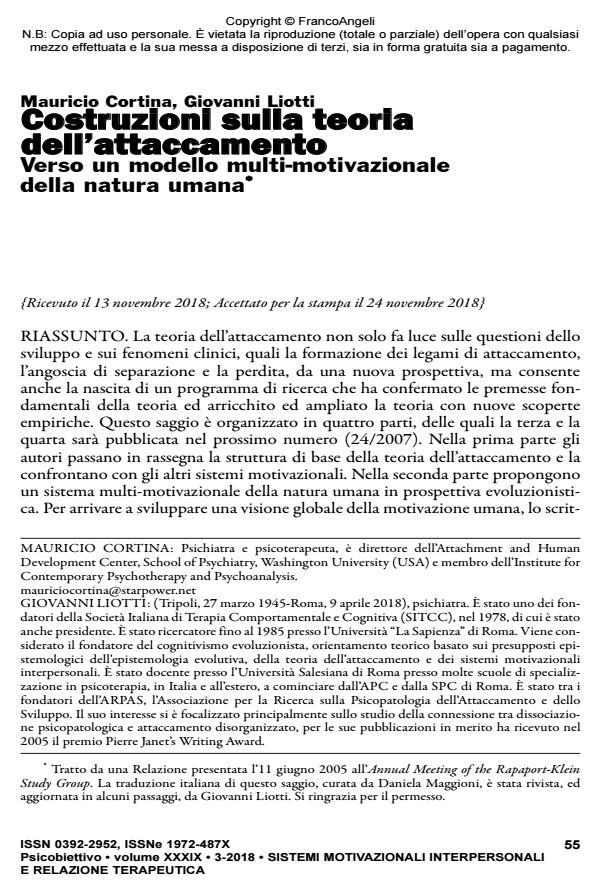Costruzioni sulla teoria dell’attaccamento Verso un modello multi-motivazionale della natura umana
Titolo Rivista PSICOBIETTIVO
Autori/Curatori Mauricio Cortina, Giovanni Liotti
Anno di pubblicazione 2018 Fascicolo 2018/3
Lingua Italiano Numero pagine 14 P. 55-68 Dimensione file 124 KB
DOI 10.3280/PSOB2018-003006
Il DOI è il codice a barre della proprietà intellettuale: per saperne di più
clicca qui
Qui sotto puoi vedere in anteprima la prima pagina di questo articolo.
Se questo articolo ti interessa, lo puoi acquistare (e scaricare in formato pdf) seguendo le facili indicazioni per acquistare il download credit. Acquista Download Credits per scaricare questo Articolo in formato PDF

FrancoAngeli è membro della Publishers International Linking Association, Inc (PILA)associazione indipendente e non profit per facilitare (attraverso i servizi tecnologici implementati da CrossRef.org) l’accesso degli studiosi ai contenuti digitali nelle pubblicazioni professionali e scientifiche
La teoria dell’attaccamento non solo fa luce sulle questioni dello sviluppo e sui fenomeni clinici, quali la formazione dei legami di attaccamento, l’angoscia di separazione e la perdita, da una nuova prospettiva, ma consente anche la nascita di un programma di ricerca che ha confermato le premesse fondamentali della teoria ed arricchito ed ampliato la teoria con nuove scoperte empiriche. Questo saggio è organizzato in quattro parti, delle quali la terza e la quarta sarà pubblicata nel prossimo numero (24/2007). Nella prima parte gli autori passano in rassegna la struttura di base della teoria dell’attaccamento e la confrontano con gli altri sistemi motivazionali. Nella seconda parte propongono un sistema multi-motivazionale della natura umana in prospettiva evoluzionistica. Per arrivare a sviluppare una visione globale della motivazione umana, lo scrit to risponde a due domande chiave: 1) Quali le caratteristiche della nostra specie che la rendono unica? 2) In che modo queste proprietà emergenti modificano i sistemi motivazionali di base che ci uniscono ad altri mammiferi e ai primati?
Parole chiave:Teoria dell’attaccamento; sistemi motivazionali; sistema multimotivazionale; prospettiva evoluzionistica; sistema cooperativo; cooperazione sociale.
Mauricio Cortina, Giovanni Liotti, Costruzioni sulla teoria dell’attaccamento Verso un modello multi-motivazionale della natura umana in "PSICOBIETTIVO" 3/2018, pp 55-68, DOI: 10.3280/PSOB2018-003006